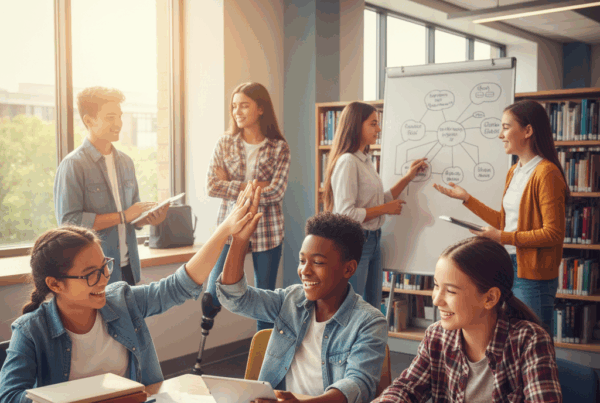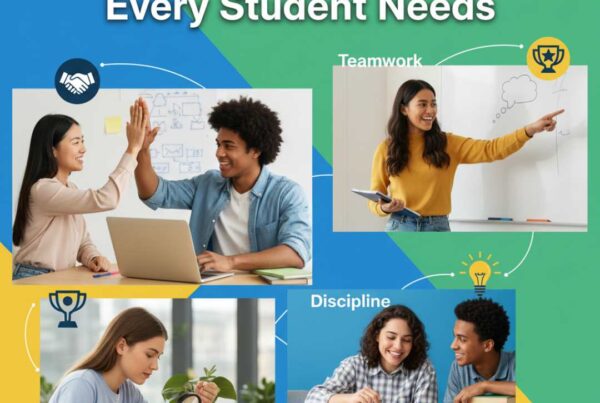Imagine a classroom where the students’ friends have more influence over their grades and behavior than the teacher.
Studies show that over 70% of students say their peers significantly impact their study habits and motivation, often more than instructional guidance.
Understanding the role of student peers is essential for educators, parents, and school administrators who want to create a positive academic environment.
In this article, we explore 7 essential ways student peers shape behavior and academic success, supported by data, real-life examples, and actionable insights you can implement immediately.
1. Student Peers Directly Influence Study Habits
Peer groups set informal standards for behavior. Students surrounded by high-achieving Student peer groups are more likely to complete assignments on time and study regularly.
Research shows that students in motivated peer groups are 30% more likely to maintain consistent study routines.
Actionable Tip: Encourage study groups with academically focused peers to boost positive learning habits.
2. Classroom Participation Rises With Positive Peer Influence
Students tend to engage more when their student peers actively participate. Classrooms with cooperative peer dynamics show 25% higher participation rates, proving the power of positive peer modeling.
Actionable Tip: Pair less confident students with active peer participants to stimulate engagement.
3. Student Peers Can Create Positive or Negative Pressure
Peer pressure isn’t always harmful. Positive peer pressure can inspire students to work harder, while negative influence can encourage distractions or disengagement.
Research reveals that students experiencing constructive peer pressure see a 15–20% improvement in academic performance.
Actionable Tip: Develop mentorship programs where high-performing Student peer groups guide and motivate others.
4. Emotional and Academic Support From Student Peers
Strong social connections among Student peer groups reduce stress and improve resilience.
Around 60% of students with supportive peers report lower anxiety during exams, indicating that emotional support is closely tied to academic success.
Actionable Tip: Implement buddy systems or peer counseling programs to strengthen social and emotional support networks.
5. Collaboration Among Student Peers Boosts Critical Thinking
When students work together, they learn to analyze, problem-solve, and think critically.
Group projects with student peers have shown a 28% increase in conceptual understanding versus independent work.
Actionable Tip: Use team-based learning, debates, and collaborative assignments to encourage critical thinking and peer collaboration.
6. Student Peers Shape Motivation and Goal Setting
Ambitious Academic peers inspire others to set higher academic goals.
Students surrounded by motivated peers are 35% more likely to pursue extracurricular learning and enrichment activities.
Actionable Tip: Showcase success stories of high-achieving peers and encourage goal-setting workshops.
7. Student Peers Develop Social and Leadership Skills
Interactions with Student peer groups also build essential life skills like teamwork, communication, and leadership.
Surveys indicate 75% of employers value collaboration skills developed through peer interactions in school.
Actionable Tip: Organize peer-led projects, group discussions, and competitions to foster leadership and interpersonal skills.
Frequently Asked Questions (FAQs)
How do student peers influence behavior positively?
Through modeling productive habits, providing emotional support, and encouraging academic engagement.
Can student peers affect grades
Yes, students with high-performing peers often achieve better grades due to positive reinforcement and study habits.
How can teachers leverage Academic peers for learning?
By structuring peer learning groups, mentorship programs, and collaborative projects.
What are the risks of negative peer influence?
Negative peer influence can lead to distractions, disengagement, or adoption of poor study habits.
How can peer support improve mental health?
Supportive student peers reduce anxiety, improve resilience, and create a sense of belonging.
How can parents encourage positive peer influence?
By guiding children toward academically motivated friends and promoting participation in school activities.
Is peer pressure always harmful?
Not at all—positive peer pressure can motivate students to adopt beneficial behaviors and achieve academic goals.
Conclusion: Maximizing the Power of Student Peers
Academic peers are a driving force in shaping behavior, motivation, and academic success. By strategically promoting positive peer interactions, educators and parents can turn peer influence into a powerful tool for excellence.
Whether through collaborative learning, mentorship, or social support, understanding the role of student peers is crucial to developing confident, motivated, and high-achieving students.



